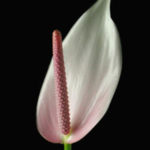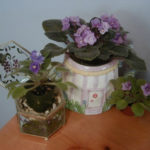About Venus flytrap (Dioneae muscipula)
Few plants are as captivating as the Venus flytrap (Dioneae muscipula). This carnivorous insect-eater appeals to the kid in everyone. Although they look like they come from outerspace or a distant locale, Venus flytraps are actually native to the United States. In nature, they can only be found within a 100-mile area along the coast of North and South Carolina. The Venus flytrap is not a large plant. It gets about six to eight inches in diameter. The leaves of the plant consist of toothed traps that lure and digest insects. When trigger hairs inside a trap are touched, the plant responds by closing on its prey. It takes up to a week for a flytrap to digest a fly and other insects. The trap re-opens to display the evidence–a shriveled insect carcass. | 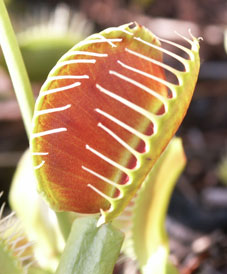 | |
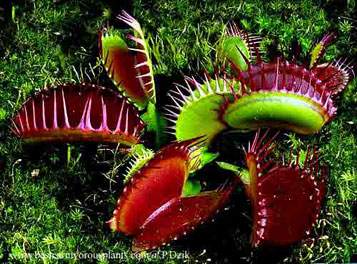 |
| A warm weather plant, the flytrap is active from April Flytraps can often be found at local nurseries and via mail- |
* Provide ample light. The flytrap is similar to a succulent in its light requirements. Place in full sun outdoors. During especially hot days in summer, move to partial shade. Indoors provide at least two to three hours of sun a day. * Water properly. Flytraps like to be kept moist and the right type of water is critical. Don’t use regular tap water on flytraps, as it is too high in salts and minerals. Softened water should also be avoided. Good water choices include deionized, reverse osmosis, distilled and rainwater. Unlike other plants, Venus flytraps should sit in standing water. Keep pots in a dish that contains about an inch of water at all times. | ||
* Feed well. Most experts recommend not fertilizing your flytraps at all. The plant receives its nutrients from the insects it eats. Outdoor plants will catch their own victims, but those grown indoors require you to feed them. When feeding a flytrap, keep a few things in mind. Good food choices include flies, sowbugs, ants, small moths and spiders. Avoid using hamburger, cheese and similar foods, as they will prematurely rot the traps. Make sure to touch the tiny trigger hairs inside of the trap, which activates it to close. Overfeeding is impossible. The more you feed, the stronger the plant. It’s best if one trap is feeding at all times. During its growing period, a flytrap constantly produces new traps. Most traps last a month or two before turning black and falling off. Although it’s tempting, refrain from teasing the flytraps closed. Falsely closed traps don’t feed the plant and can take 24 hours to reopen, which causes them to blacken prematurely. * Repot. For best results, it’s a good idea to repot flytraps every two years. This is best done at the tail end of dormancy in January or February. The soil mix recommended by most experts is 2 parts peat moss and one part perlite or silica sand. Moisten the mix before planting. Flytraps do best in * Move outside for winter. If you choose to grow your flytrap indoors, bring it outside during winter months so that it can receive adequate chilling. Watch that it doesn’t become water-logged during winter rains, though, or it could drown. | 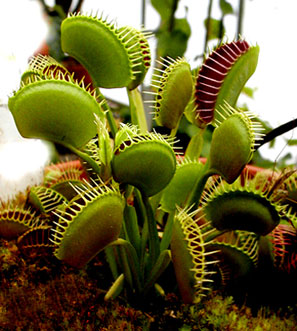 | |




